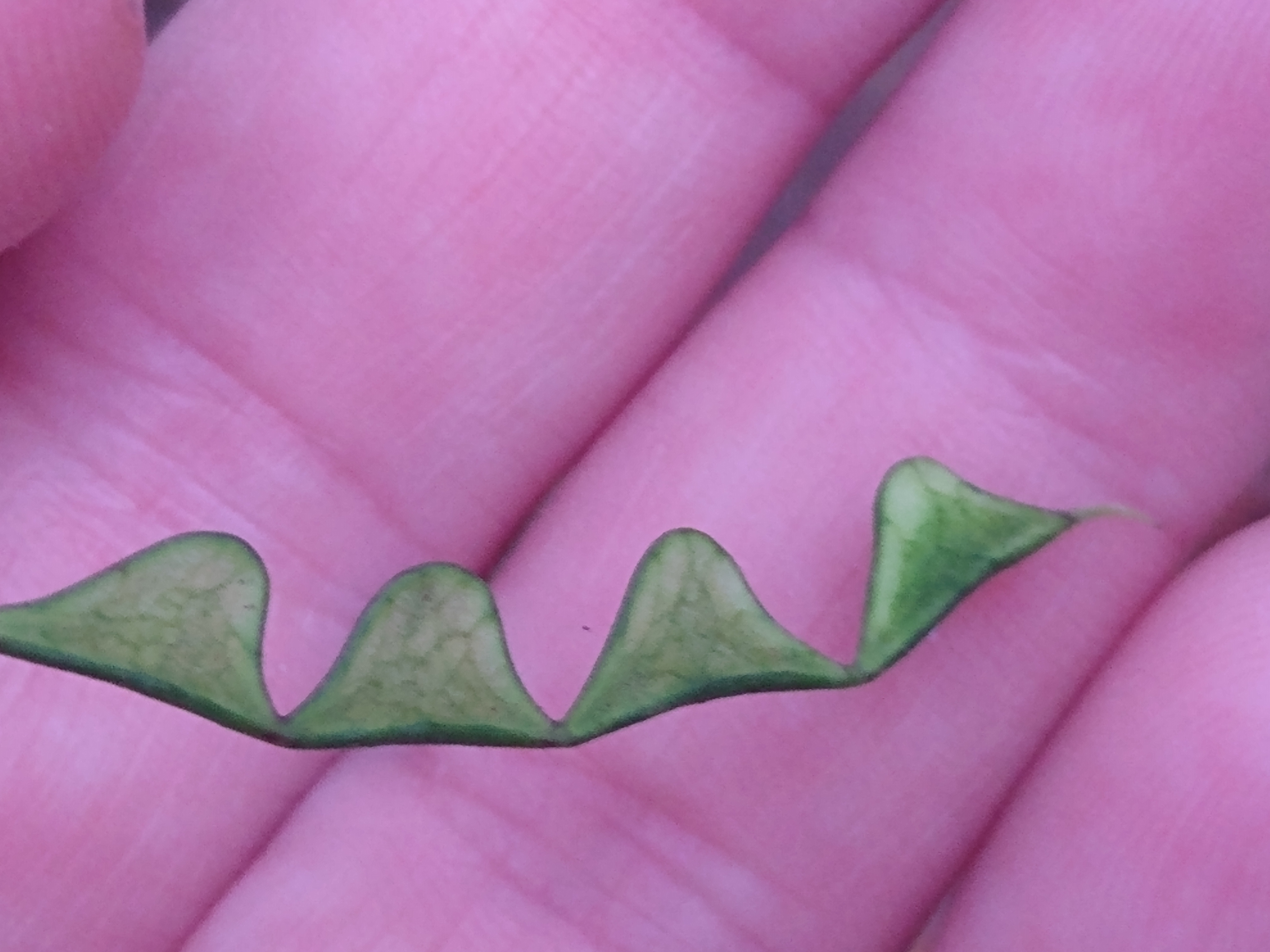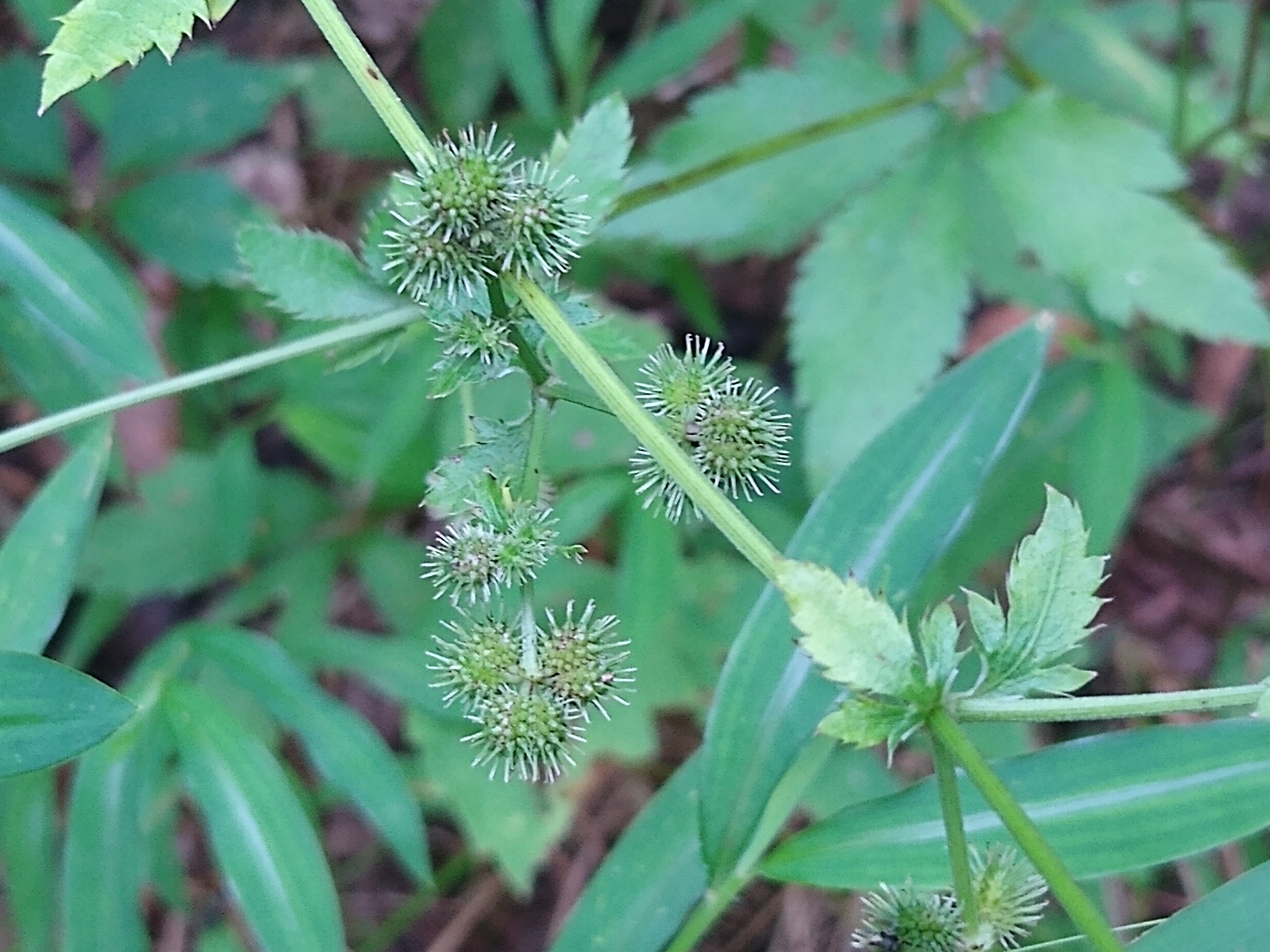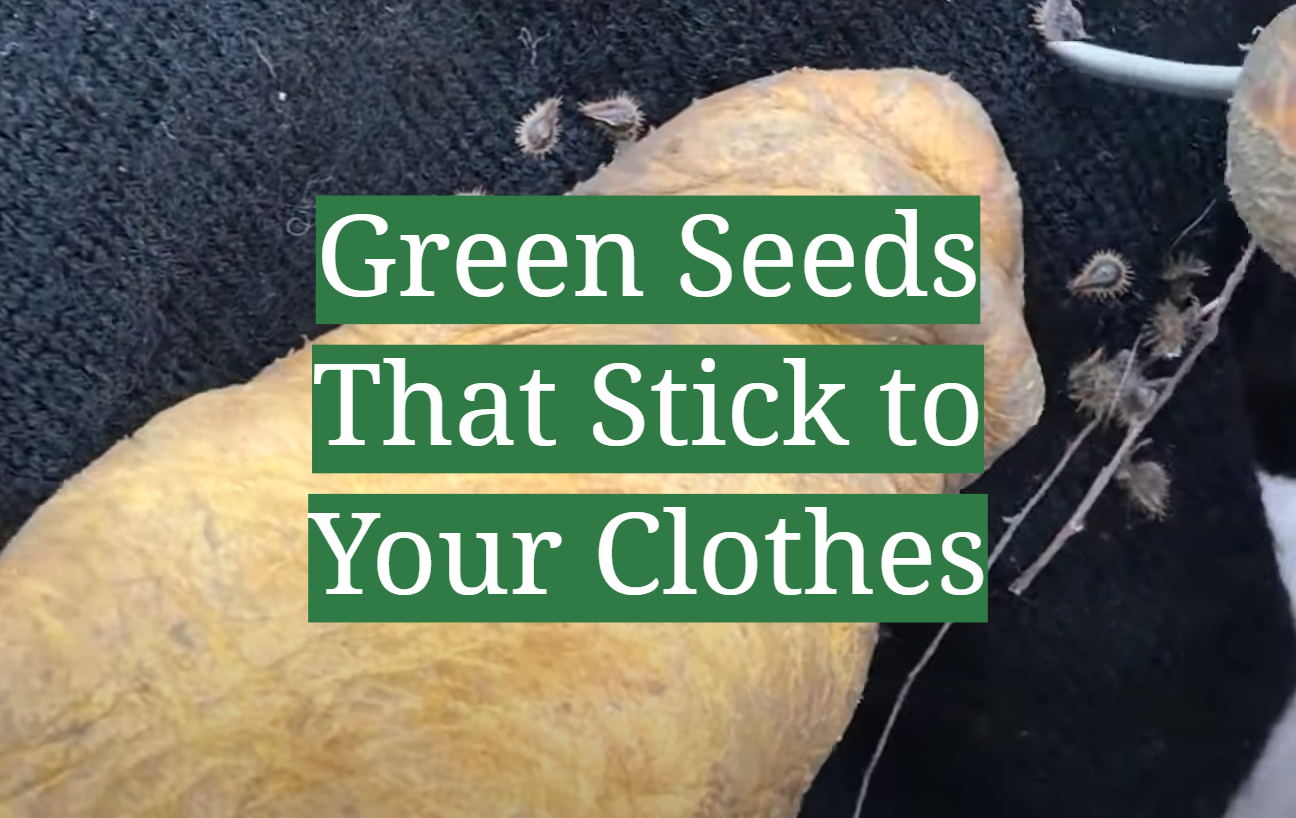As a gardener and nature lover, I frequently find myself covered in tiny green seeds that cling to my clothing after spending time outdoors These pesky “hitchhikers” can be frustrating, spreading invasive plants and ruining clothes However, the more I learn about them, the more fascinating I find their ingenious methods of dispersal.
The most common green seeds that stick to clothing belong to burdocks, tick-trefoils, and beggar’s-lice. Burdocks, such as great burdock and common burdock, produce bristly seed heads designed to latch onto fur and fabrics. Tick-trefoils, including pointed-leaf tick-trefoil and showy tick-trefoil, have seeds with hooked tips that snag and cling. Beggar’s-lice, also called stickseeds or sticktight, are covered in tiny grappling hooks that grab and attach.
These plants rely on humans and animals to spread their seeds far and wide. As we brush by, the tenacious seeds hook into socks, shoelaces, sleeves, and pants. We unknowingly give them a free ride, transporting them from place to place on our clothes. Some may cling for miles before eventually dropping off in a new location to sprout and grow.
While fascinating, this method of dispersal can cause major headaches. The sharp, spiny seeds can be difficult and painful to remove. They can damage clothing, poking holes and leaving green stains. The clinging seeds tracked indoors can also be a nuisance, dropping onto carpets and furniture.
Even more problematic, the seeds spread invasive plant species that wreak havoc on ecosystems In the United States alone, noxious weeds spread by hitchhiking cause around $7.4 billion in lost productivity and control costs annually. Some grazing animals have even died from ingesting the barbed, spiny seeds while foraging
So what’s the best way to deal with these pesky hitchhikers? Here are some tips:
-
Inspect your clothes before going inside and remove any clinging seeds. Turn socks and shirt cuffs inside out and check carefully.
-
Use sticky tape or rubber gloves to help remove stubborn seeds. Avoid pulling hard to prevent holes in clothes.
-
Wash clothing soon after exposure to detach remaining seeds. Use heavy-duty settings for heavily infested items.
-
Clean vehicles after driving through weed-infested areas. Check wheel wells and undercarriages where seeds collect.
-
Cover garden soil with mulch or ground cover to prevent weeds. Maintain healthy plants to outcompete weed seedlings.
-
Weed early and often. Remove invasives before they go to seed. Bag and dispose of mature weeds properly.
While inconvenient, the ingenious seed dispersal of hitchhiking plants is an impressive evolutionary adaptation. However, a few precautionary measures can help prevent you from becoming an unwitting participant in their propagation. With proper diligence, you can enjoy the outdoors seed-free and weed-free. The battle against clingy green hitchhikers rages on, but awareness and prevention can empower us in the fight.
Field Notes: Hitchhiking Seeds
By Ellen Powell, DOF Conservation Education Coordinator
When you think of summer hitchhikers, you probably think of chiggers and ticks. Oh no! Did you know that beggar-ticks and harvest lice can also ride on your clothes? Don’t worry—they won’t make you sick or itch. They are the harmless seeds of some of our native plants.
Seeds that cling are adapted to travel to new locations on the fur of animals. When a furry mammal brushes against one of these plants, it dislodges and carries away sticky seeds. Often, the seeds stay on the animal until it stops to clean itself. Then, it pulls the seeds off and drops them. In this way, the plants are able to spread to new locations.
Plants in the genus Bidens are commonly known as tickseeds, and their seeds are often called beggar-ticks. The slender, two-pronged seeds easily hook onto fur or fabric. Bidens bipinnata, known as Spanish needles, has beautiful fern-like leaves and seeds that may be ¾ inch long.

The genus Desmodium has many species that are hard to tell apart. Known as tick-trefoils or stick-tights, they have three-parted compound leaves and flowers that are often pink or purple. Tick-trefoils are in the legume family, like beans and peas. In fact, their chains of flattened seeds might remind you of peapods. The seeds have a rough texture like Velcro. The slightest brush of a pant leg is enough to stick them fast.

Black snakeroot (Sanicula canadensis) has small round seeds that bristle like tiny hedgehogs. The plants are very shade tolerant and can be found in forest understories all over Virginia.

Harvest-lice are the seeds of Agrimonia parviflora, another woodland understory plant. They are shaped like prickly spinning tops.

As you walk along the trails in late summer, you might notice that your clothes are acting like animal fur, helping to spread seeds to new places to grow. Are there any other seeds that stick to things? Put an old sock or piece of felt on a long stick and drag it through the woods or fields. You might be surprised at the hitchhikers you pick up!.
These Seeds Stick to My Clothes! Spanish Needles, Beggars Tick, Bidens bipinnata
FAQ
What are those green things that stick to your clothes?
Which seeds stick on clothes?
Which green seed sticks to clothes?
The most common green seed that sticks to clothes is the burdock or ‘thistlehead’, which belongs to the plant family Arctium minus. It has a distinctive tufted, spiny head and can be found in urban areas as well as rural regions. The seed heads are sticky and easily attach themselves to clothing or fur when brushed against.
What Weed Seeds Stick to your clothes?
The weed seeds that stick to your clothes are commonly referred to as hitchhikers. The other fun part is that they know how to hold good on our clothing, making them travel wide. Here is a list of the weed hitchhikers. 1. Palmer’s Grappling Hook (Harpagonella Palmeri) 2. Hedge Parsley (Torilis arvensis) 3. Common Burdock (Arctium minus) 4.
What plants stick to your clothing?
These pesky plants typically stick to our clothing, hair, fur, and feathers to disperse their seeds into new areas. Examples include Spanish Needles, Virginia Stickseed, Burdock, Cocklebur, and Bedstraw. These plants have hooks, spines, barbs, and burrs that latch onto our clothing and make it difficult to remove.
How do I keep green seed heads from sticking to my clothes?
The best way to prevent green seed heads from sticking to your clothes is to wear protective clothing when you’re outside. Long pants and long-sleeved shirts are a good option. If the weather is hot, choose lightweight fabrics that will help keep you cool while providing protection from weeds.
- The Ultimate Guide to Growing Strawberries in Raised Beds - August 8, 2025
- No-Dig Garden Beds: The Easiest Way to Grow a Beautiful Garden - August 6, 2025
- How to Protect and Preserve Wood for Raised Garden Beds - August 6, 2025

